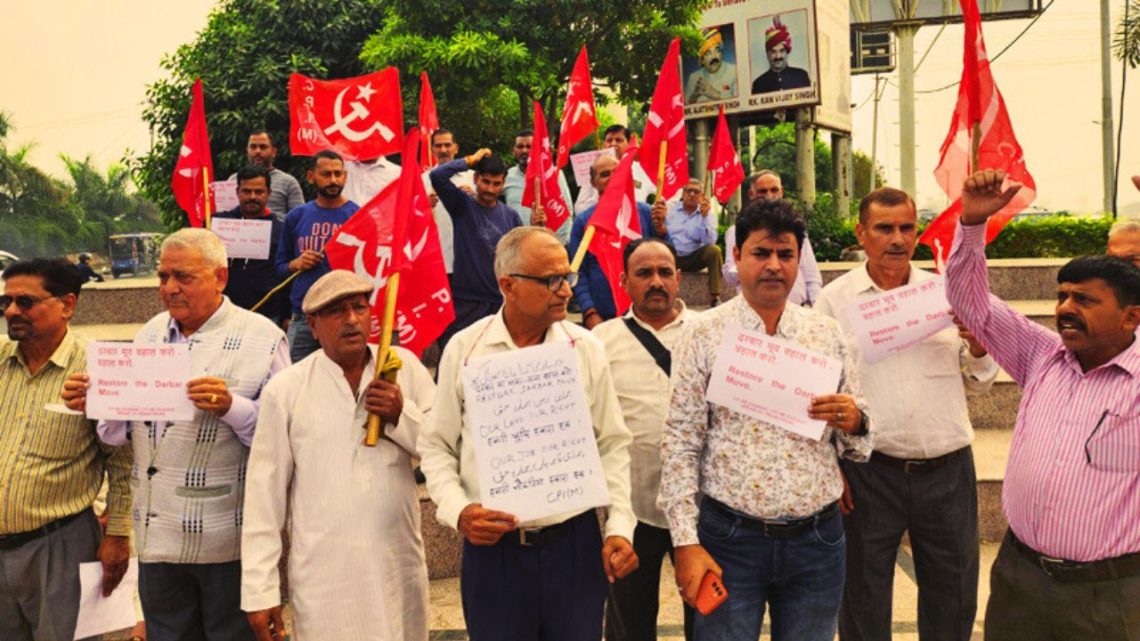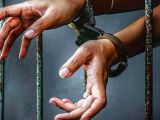
CPI-M Protests in Jammu, Calls for Restoration of Darbar Move and Statehood in IIOJK
November 12, 2024“We demand the restoration of the Darbar Move, statehood, and protection of land and job rights under special status,” Kumar stated.
In Jammu, Indian Illegally Occupied Jammu and Kashmir, the Communist Party of India-Marxist (CPI-M) organized a protest demanding the revival of the Darbar Move and restoration of statehood. The Darbar Move, a longstanding practice where the IIOJK secretariat and government offices shift biannually between Srinagar and Jammu, was officially halted by the BJP-led administration.
CPI-M protesters, led by JK Kisan Tehreek President Kishor Kumar, held placards supporting the restoration of the Darbar Move, special status, and job rights for locals. They chanted slogans such as “Restore Darbar Move, restore statehood,” expressing frustration over recent changes imposed by the central government. The protesters condemned the BJP for reducing Jammu and Kashmir from statehood to Union Territory status and disrupting the biannual Darbar Move tradition.
“We demand restoration of the Darbar Move, statehood, and protection of land and job rights under special status,” Kumar stated, pointing out that BJP’s actions disrupted an age-old practice that bridged the regions of Kashmir and Jammu. He noted that the initial grant of special status was given by the former Maharaja Hari Singh, which BJP later revoked, sparking discontent among locals.
Kumar stressed that with the re-establishment of a democratic government in Jammu and Kashmir, it is time for the central administration to reinstate statehood, special status, and the Darbar Move. His statements echo growing concerns that these decisions have distanced Srinagar from Jammu.
An October 23 order from the General Administration Department (GAD) confirmed that only administrative secretaries and Union Territory-level heads will shift to Jammu for winter, marking the official end of the Darbar Move. CPI-M’s demonstration in Jammu reflects widespread calls for reinstating a practice deeply rooted in the region’s cultural and administrative history.
4o

